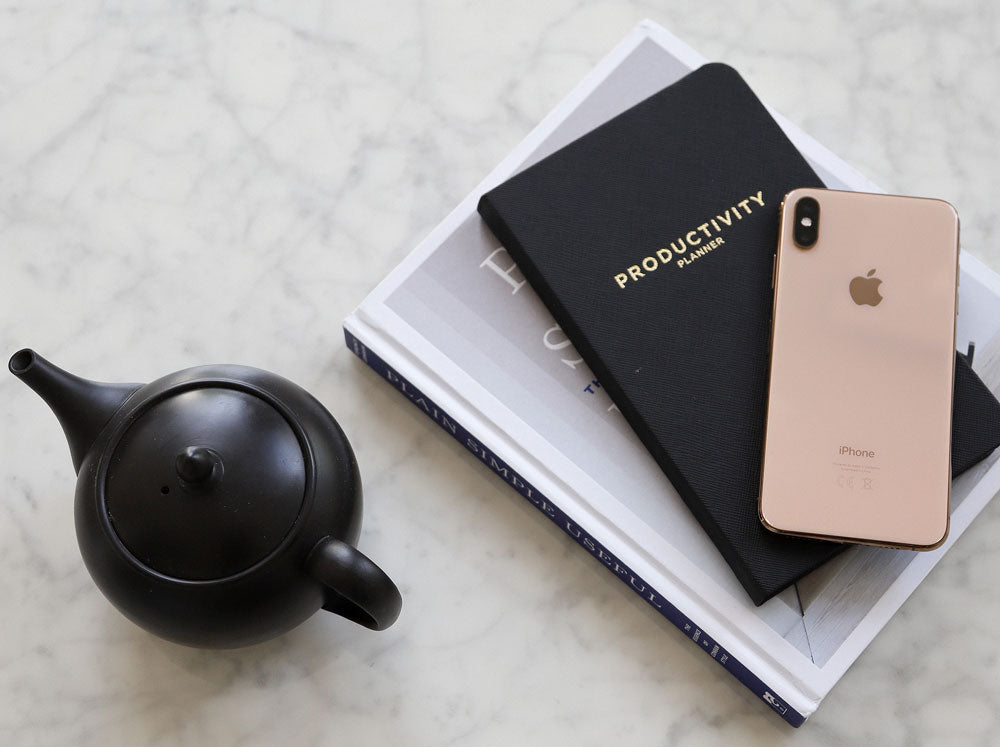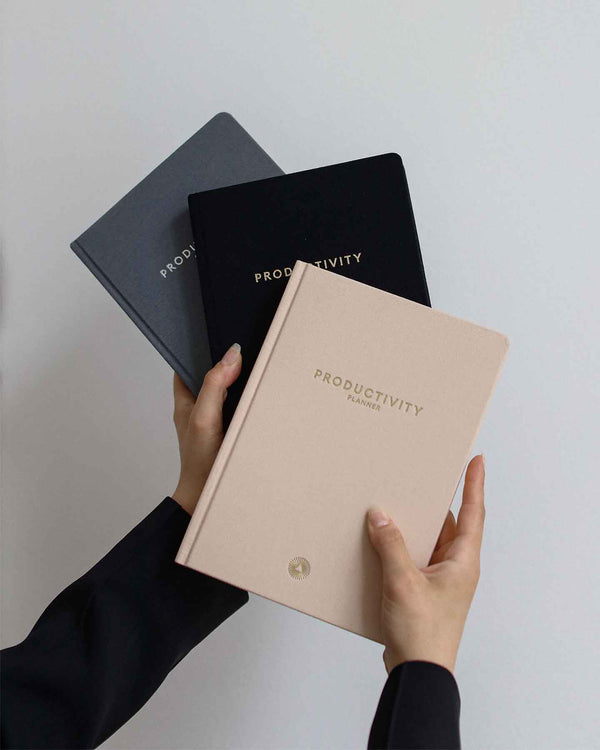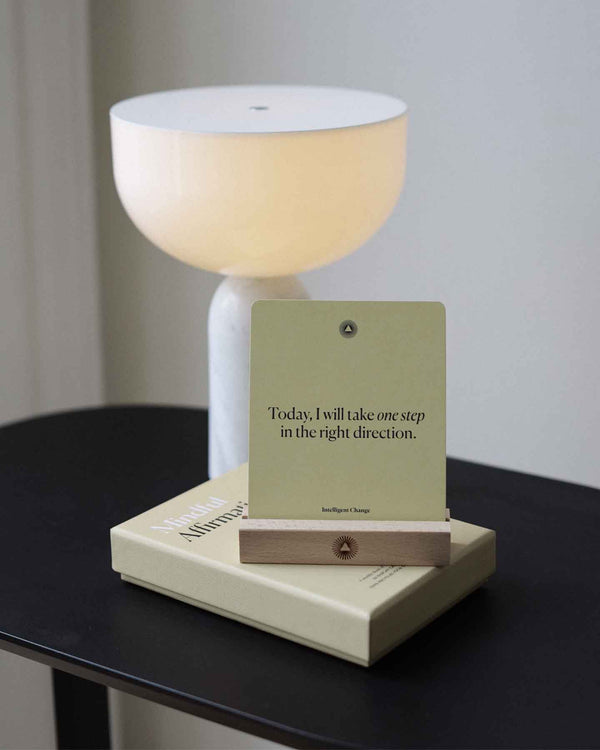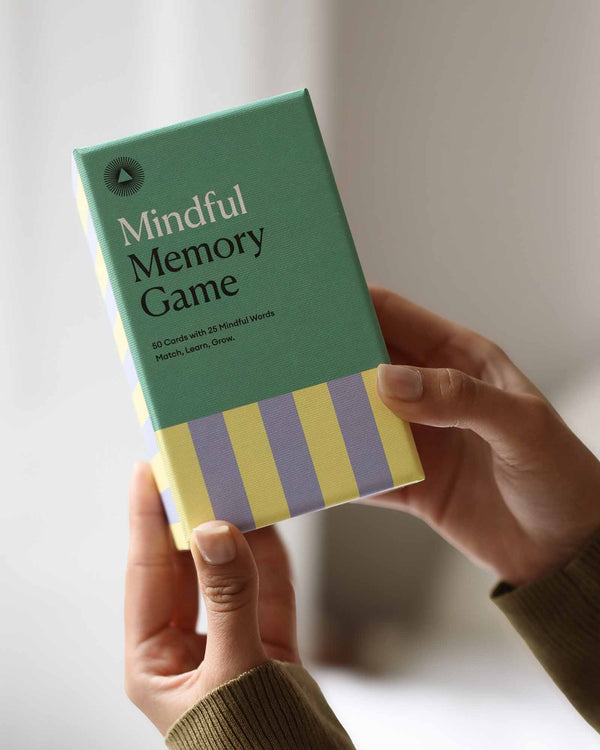How to Be More Mindful at Your Work Desk
by Intelligent Change
Regardless of what your job is, once you get caught up in overworking, tight deadlines, the monotony of doing the same thing every day, dealing with challenges and stressful meetings, it becomes hard to maintain a mindful work desk.
Is there a way to keep the enthusiasm and feel happy at the workplace in times like these?
Of course–the answer is mindfulness.
If you’d like to learn how to keep a mindful work desk, prioritize your mental health and maintain emotional well-being at work, keep reading. But first, let’s discover what mindfulness is all about.
What Does It Mean to Be Mindful?
Awareness. Presence in the now. Acceptance. Self-nurture. Non-judgmental experience. Meditation.
These are the terms commonly associated with the state of mindfulness.
American Psychology Association defines it as "moment-to-moment awareness of one's experience without judgment. In this sense, mindfulness is a state and not a trait". It means tracking our feelings, sensations, and environment in a nurturing way.
There’s a huge body of research about the topic, and the results show that practicing mindfulness improves our metacognitive skills and awareness, decreases rumination about problems, and enhances our attention and focus, among other things. This kind of improved cognitive apparatus leads to more effective strategies for emotional regulation as well.
The practice originates from Buddhist meditation, but it’s not limited to it. There are many ways of practicing it through improving existing daily habits, implementing new ones, and learning how to shift our mindset.
Research on mindfulness revealed that it helps lower our overall negativity and stress. It reduces symptoms of depression, anxiety, and somatic distress, which is visible even on the neural level. Practicing mindfulness can improve our working memory capacities and cognitive flexibility, but it also reduces our emotional reactivity.
Mindfulness is strongly connected to the concept of the growth mindset: there’s no “right” or “wrong” way of feeling, there’s no space for judging ourselves or others. There are only valuable lessons, tuning our thoughts and actions to the present moment, and accepting things the way they are.
Mindfulness is not only related to improved cognitive and emotional performance. By lowering the levels of perceived stress and negativity, it improves our overall physical health, making us less susceptible to a variety of illnesses.
So, to sum it all up, mindfulness is all about being present in the now, more accepting, and less judgemental.
The practice of mindfulness has immense benefits for our mental and physical health and can make us more productive and happier in every sense: at work, at home, in our relationships, and basically in every other domain of our lives.
Now that we’ve been through all the vital benefits of practicing mindfulness, one question remains: how to implement it into your workday?

Tips for Creating a Mindful Work Desk

In order to help you remain focused and present in the office, even when you’re faced with an overwhelming amount of work, we’ve prepared this list of tips to help you remain calm, present and motivated. It is extensive, but we guarantee there’s something for everyone!
Meditate in Short Sessions
Short sessions of mindfulness meditation are an excellent way of preventing stress burn-out. Even when your daily to-do list makes it seem impossible to take a couple of minutes to meditate, you should definitely try.
The common misbelief about mindfulness meditation is that it takes a lot of time. That’s absolutely not true. Of course, it’s great if you have half an hour or more for meditation, but even short 5 or 10-minute sessions can do the trick.
Mindfulness meditation is very simple, yet so effective. It consists of breathing practice and mind and body awareness. You don’t need any special preparation, props, candles, or mantras (although you can include them if you like). All you need is a comfortable place to sit or lay down and an open mind.
Here’s how to practice mindfulness meditation:
- Sit comfortably so you can relax all of your muscles.
- Be aware of your legs and place them comfortably.
- Strengthen your torso, but don’t stiffen it, just be aware of it.
- Be aware of your arms and place them in a relaxing and comfortable place.
- Soften your eyelids by lowering your gaze or close your eyes completely. If your eyes remain open, don’t focus on anything, just let the imagery be.
- Focus on your breath: breathe in through your nose and breathe out either through your nose or your mouth. Focus on the sensations in your chest and belly.
- Notice when your attention moves elsewhere. That’s not a reason to stop the meditation, just return the focus on the process. Be kind to your wandering mind.
- When you’re ready, gently exit the process of meditation and become aware of yourself, the environment, your thoughts, and emotions.
This is the basic meditation outline, however, you can enrich it with some guidance and additional steps, there are no strict rules. For example, you can focus on relaxing every part of your body by focusing on it and relaxing it consciously, or by stiffening and relaxing every muscle. Experiment until you find what works for you best.
Do Breathing Exercises
Mindfulness meditation is a lot about focusing on your breathing, but you can also do some breathing exercises separately from your meditation practice. We selected three easy breathing exercises you can practice anytime and anywhere to reduce stress, achieve calmness, and gain mind clarity.
All you need to do is sit in a relaxing position, keep your mouth closed, and inhale slowly through your nose. Then, pucker your lips as if you would whistle or blow on hot food and exhale slowly. By taking consistent, deep breaths, your body and mind achieve overall relaxation.
This deep breathing exercise (also called four-square breathing) relieves stress, helps increase concentration, and regulates the autonomic nervous system. Here’s the process: inhale for a count of 4, hold your breath for a count of 4, exhale for a count of 4, wait at the end of the exhale for a count of 4, and then repeat.
This breathing technique originates from yoga and it’s called nadi shodhana pranayama. Besides its relaxing effects, it also improves cardiovascular function and lowers your heart rate. It’s important to note that this breathing exercise should be practiced on an empty stomach.
Here’s how you do it: take a seating position and make yourself comfortable. Put your right hand on your nose and press your fist and middle fingers toward your palm, leaving the other fingers extended. Take your thumb and gently close off the left nostril and inhale fully. Then, release your thumb and immediately use your ring finger to close off the opposite nostril and exhale slowly. Repeat the cycle as many times as you feel comfortable, just make sure to finish by exhaling on the left side.
These three are just to start. But if you want to try out more, consider taking yoga lessons, as breathing techniques are an integral part of every yoga training.
Be a Mindful Listener
How is active, or better yet, mindful listening, different from regular listening?
Have you ever been in a staff meeting, presentation, or had a simple conversation with someone and the words just remained blurry in your memory?
To most people, this happens quite often. You don’t even need to be overwhelmed by work to sometimes zone out. If you’d like to make your days at the workplace more productive, you should consider building the habit of mindful listening.
What Is Mindful Listening?
Mindful listening is when you focus your full attention on the person you’re talking with and give your best to understand and feel them. To achieve this, you need an open mind and certain conversational techniques that are very easy to acquire.
For example, if you’re in a meeting, you can take notes to make sure that you don’t just wander off. You can also engage by asking meaningful questions, or wrapping up and summarizing what other people said in order to gain more clarification.
If you’re talking to a colleague, you can repeat what they said from time to time to show them that you’re listening. You can also show interest in their story by asking them to elaborate on what they meant further on or to provide you with more details.
Clarifications and reflections are also welcome: to confirm that you understood the speaker well, try summing up what they said and asking, “Did I understand this well?”. You can also reflect by sharing how their words affected you or share your experience.
To achieve mindful listening, you can also try to drop all distractions, such as checking your mobile phone, emails, eating, etc. Allow the other person to finish their sentence and show compassion and patience. Try to be at the same level during the conversation. For example, avoid standing while the other person is sitting, and vice versa, and me mindful of their body language: their body posture, facial expression, hand position, etc. Pay attention to yourself as well. How are you feeling during the conversation? What are your thoughts? Do you have any bodily sensations?
Take Regular Breaks

If you don’t take regular breaks while working, you risk losing your energy and focus for that day permanently.
If you’re using The Productivity Planner, you already know that you should plan your daily tasks by splitting them into 20 or 30-minute working sessions, interrupted by 5-minute breaks. Every time you complete a task, you take a longer break.
Now, you may be wondering what you are supposed to do during these 5-minute breaks? Other than simple things like drinking water, having a snack, chatting to a colleague or stretching, you may as well meditate, do breathing exercises, or have some fresh air.
Build a Productive Morning Routine
What do your mornings look like? Do you wake up after 5 alarm snoozes panicking you’ll be late for work, bite on whatever you find in the kitchen, rush out or open your laptop immediately? Or do you get up early, take time to get ready for a new day, work out, prepare a nutritious breakfast, journal, or whatever works for you?
One part of having a mindful work desk is mindfully preparing to sit at it.
Not everyone is a morning person, but everyone can train themselves into building a productive morning routine. To find out more about how to build this habit, check out this article on our blog!
Waking up at least one or two hours earlier requires making some changes in your daily schedule such as when you go to bed, how many times you snooze the alarm (it should be zero!), when do you get ready for the next day, etc. Although these changes can feel like renunciation, they’re actually bringing you closer to being more mindful. They’re your 1% change towards creating successful habits. You can start today by implementing a productive morning routine into your Productivity Planner, for a more mindful work desk.
Here are some of the things you can do to make your mornings more productive, relaxed and meaningful:
- Work out, stretch or do yoga;
- Meditate;
- Read a book;
- Practice positive affirmations;
- Fill out your Five Minute Journal or just count your blessings;
- Prepare a healthy breakfast, and so on.
Mornings are the most important part of the day. That’s when our energy and strength are at their peak.
Be Conscious About Using Your Phone
Is there anything as distracting as messages, notifications, and phone calls popping on your phone every couple of minutes?
Scrolling on social media platforms is not an adequate way to take a break, as excessive use of phone leads to enhanced levels of anxiety, depression, and perceived loneliness. It also lowers our self-esteem and causes irritation and frustration.
All this is completely the opposite of what being mindful means. Excessive phone (and, overall, screen) usage makes us much less mindful, so in order to create a mindful work desk, consider limiting the time you spend with your mobile phone.
Plan Ahead with The Productivity Planner

Planning ahead and having a clear vision of your day is one of the greatest mindfulness tips. Can you expect to be present in the moment and fully aware if you’re never sure what’s the next thing you’re supposed to do? If every day passes by in total chaos, unplanned meetings, and activities?
The Productivity Planner helps you prevent this. It’s a hard copy notebook designed to gear you toward maximum productivity and organization. It’s based on the focus time technique, which is one of the best time management methods.
It also requires you to prioritize your tasks, plan ahead, and reflect on your experience.
The Productivity Planner has two levels of planning ahead: weekly plans and daily plans. At the end of each day and week, you have some space for a short reflection on your experience.
Also, each day you need to pick one most important thing for that day, meaning that you learn how to prioritize and choose what’s really important..
Here are some additional tips on how to use The Productivity Planner.
Avoid Multitasking
Although the ability to multitask may seem like a useful skill, research reveals that it’s actually quite the opposite. A Stanford University study showed that people who believe they’re good multitaskers actually suck at it, much more than those who prefer doing a single task at a time. Moreover, multitaskers have worse performance, due to the inability to organize their thoughts and filter out irrelevant information.
Multitasking is one of the greatest productivity killers, and it doesn’t comply with mindfulness. Mindfulness requires you to focus on one thing solely and be present in the current moment.
A mindful work desk is a one-thing-at-a-time work desk.
Eat Consciously
Is there such a thing as mindful eating? Well, of course!
Very often we eat mindlessly: grabbing the first thing we see in the fridge, text and eat, eat more than we really need, not invest ourselves in the preparation process, and so on. This happens because we perceive the act of eating as a waste of time in the pursuit of achieving productivity and efficiency. But there are several reasons why this approach is wrong.
First, taking breaks is crucial for remaining mindful, focused, and productive. Second, eating is the bare necessity for keeping your energy at a high level, which is why you should pay attention to what you eat, when you eat, and how you eat.
Just like other mindfulness practices, mindful eating is all about being aware, following your bodily signals, being conscious about meals and its ingredients, and so on.
Here’s how you can practice mindful eating:
- Follow your body’s signals;
- Recognize when you are full and know when to stop eating;
- Be aware of where and when you eat;
- Choose healthy, nutritious meals;
- Eat slowly and chew your food thoroughly;
- Limit distractions and avoid doing other things while eating;
- Be considerate of the origins of your food.
Although it can be difficult to implement all this into your day at the workplace, we recommend to give it a shot, especially if you work from home. Prepare your food the night before, bring groceries to work instead of ordering food, try to be aware of the various nutritious qualities of your food, follow your body’s signals. That means considering whether the food is tasty for you, does it suit you, does it give you energy or make you feel sleepy, are you full yet, or still hungry, and so on.
Keep a Journal

Journaling is an excellent way to cultivate mindfulness. Keeping a journal requires focus, discipline, an open mind, and creativity. There are many types of journals to keep:
- Reflective journal;
- Gratitude journal;
- Project journal;
- Bullet journal, etc.
Keeping a journal is like a personal project on its own.
For example, if you decide to go for a reflective journal, you should make sure to make regular entries, be open-minded, analyze events from a different perspective, use your journal to understand your decisions, thoughts and actions and improve future behaviour.
You can even keep separate reflective journals: one for your private life and the other for work.
The entries do not necessarily have to be too long and introspective. Sometimes all you need is to shortly write down what happened, and then you can reflect on that particular event for days.
Other types of journals can also come in handy for creating a mindful work desk. A project journal is great for keeping track of the projects you work on, a gratitude journal is good for nursing a positive mindset, while a bullet journal can help you improve organizational skills.
Engage in Meaningful Daydreaming
Have you ever noticed how your mind produces dozens of brilliant ideas while wandering off into daydreaming?
Although some people may think that daydreaming is a waste of time, one study found that it actually enhances creativity and focus. The researchers assumed that people need a short “time off” period before approaching a problem that requires a creative solution.
They split people into four groups: one engaged in a demanding task, the other engaged in an undemanding task, and the two remaining groups had a break or no break. The results showed that the group that engaged in an undemanding task had the best performance on a later task. This research confirmed that activities in which our minds get a chance to wander off a little bit can facilitate creative problem-solving.
Practice Gratitude
Practicing gratitude is one of the best ways of becoming more mindful.
According to leading positive psychology researchers, practicing gratitude can have immense benefits on our mental and physical health. Their research revealed that people who practiced gratitude at least on a weekly basis (or more often) reported higher levels of overall life satisfaction, higher motivation to progress toward achieving personal goals, a higher state of alertness, focus, and determination. They were also more likely to help or offer emotional support to another person.
It’s just that expressing gratitude and thinking about what we’re grateful for in life is an amazing stress-relief method.
But how do you practice gratitude?
One way is to communicate it with others and show your appreciation. For example, try changing your vocabulary by remembering to implement grateful words into it, such as “thank you”, “appreciate it”, “this means a lot to me”, “I value this so much”, and so on.
The other way is to keep a gratitude journal.The idea is that, after some time of filling out a gratitude journal, you’ll start changing the way you see yourself and the world around you, think, behave and speak.
Keeping a gratitude journal is very easy. All you need is a blank notebook or a curated Five Minute Journal.
The Five Minute Journal takes only five minutes of your day to fill it out, and the benefits are endless. You can decide to fill it out as part of your morning routine or right before you start to work, and then again in the evening, or after you wrap up for the day. It helps you be more mindful at the work desk by helping you focus on yourself and your environment at work, and it reminds you what you’re grateful for every single day.
If you’re not a notebook fan, you can also download The Five Minute Journal app, which allows you to scroll your gratitude timeline, add photos, create reminders, and so much more.
Build a Growth Mindset
If you want to become more mindful at work, you should consider changing the way you think about problems, challenges, failures, and mistakes.
If you find it hard to deal with adversities and mistakes, and if you avoid engaging in challenging tasks because you’re scared you won’t succeed, you probably have a fixed mindset.
A fixed mindset is all about rigid norms and preserving the positive self-image, without taking risks. People who nurture a fixed mindset believe that their abilities, intelligence, and skills are unchangeable, so they don’t even try to make progress toward growth.
Creating a mindful work desk means engaging in challenges, being aware of your abilities, taking up new projects, learning on the way, celebrating small wins, recognizing opportunities to grow and self-develop, and noticing the effects of your progress.
Find out more about building a growth mindset in this article on our blog.
Change Your Position
Sitting in your chair working all day is not very inspiring, nor mindful. That’s why you should stand up from time to time, and, if possible, work from a standing position. If your job requires you to sit, check out the laptop stand or kneeling chair–they will allow you to keep your back straight
Also, switching from a sitting to a standing position while working can be very beneficial for your focus and engagement. A Texas University study revealed that students were more engaged with their tasks if they were put in a standing position.

Wrapping It Up

As you can see, there’s a wide variety of things you can do to be more mindful at your workplace and take care of your mind: from meditation and breathing exercises to planning your days and filling out a gratitude journal. Small things also can help: try standing up, eating consciously, daydreaming, doing regular breaks, or simply listening to other people.
What do you think? What can you implement into your workday as soon as tomorrow?
A last bit of advice: start small. Step by step, day by day, and you’ll notice your mindfulness increasing with each passing day.











